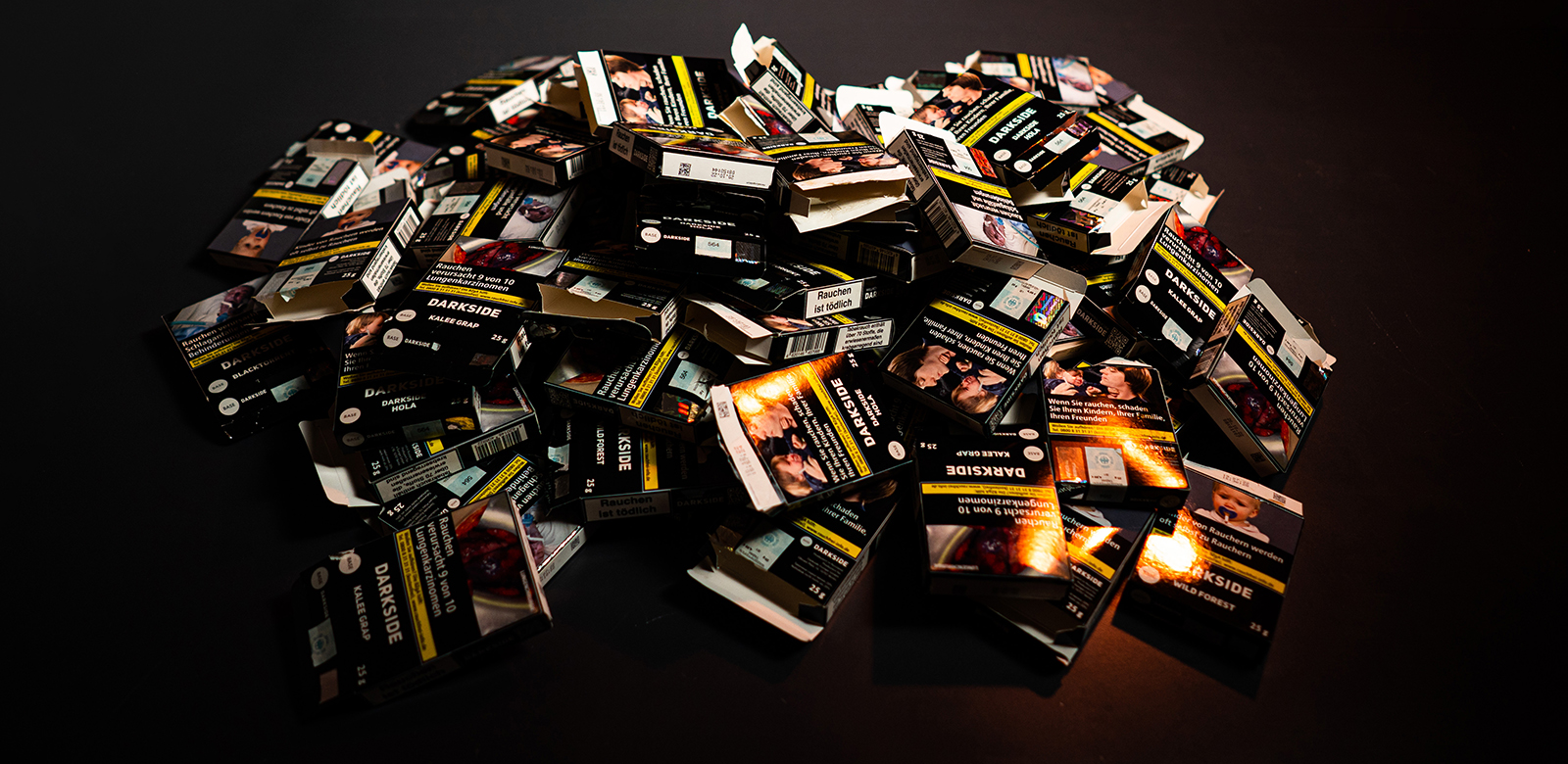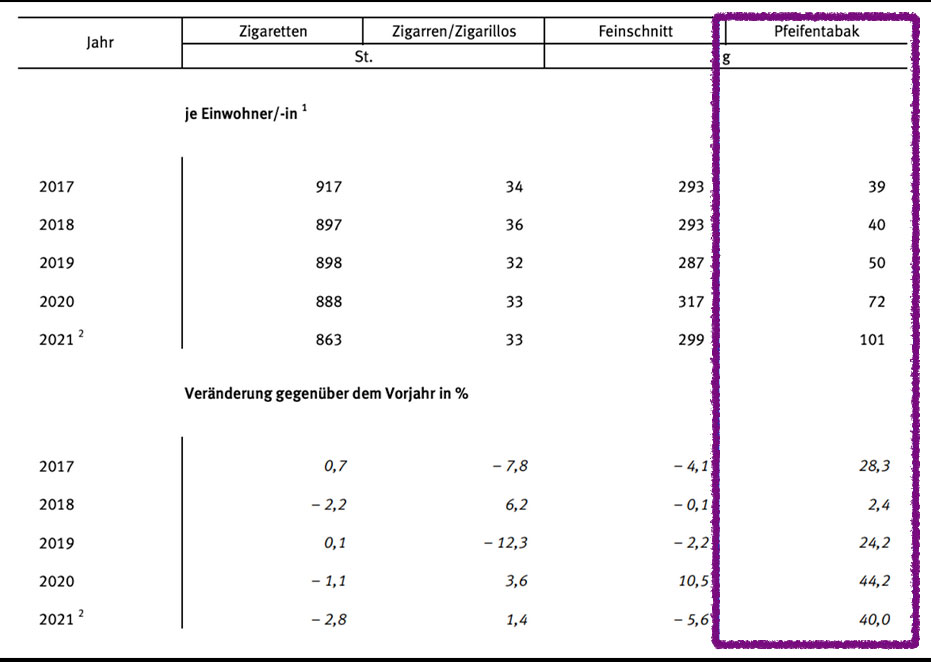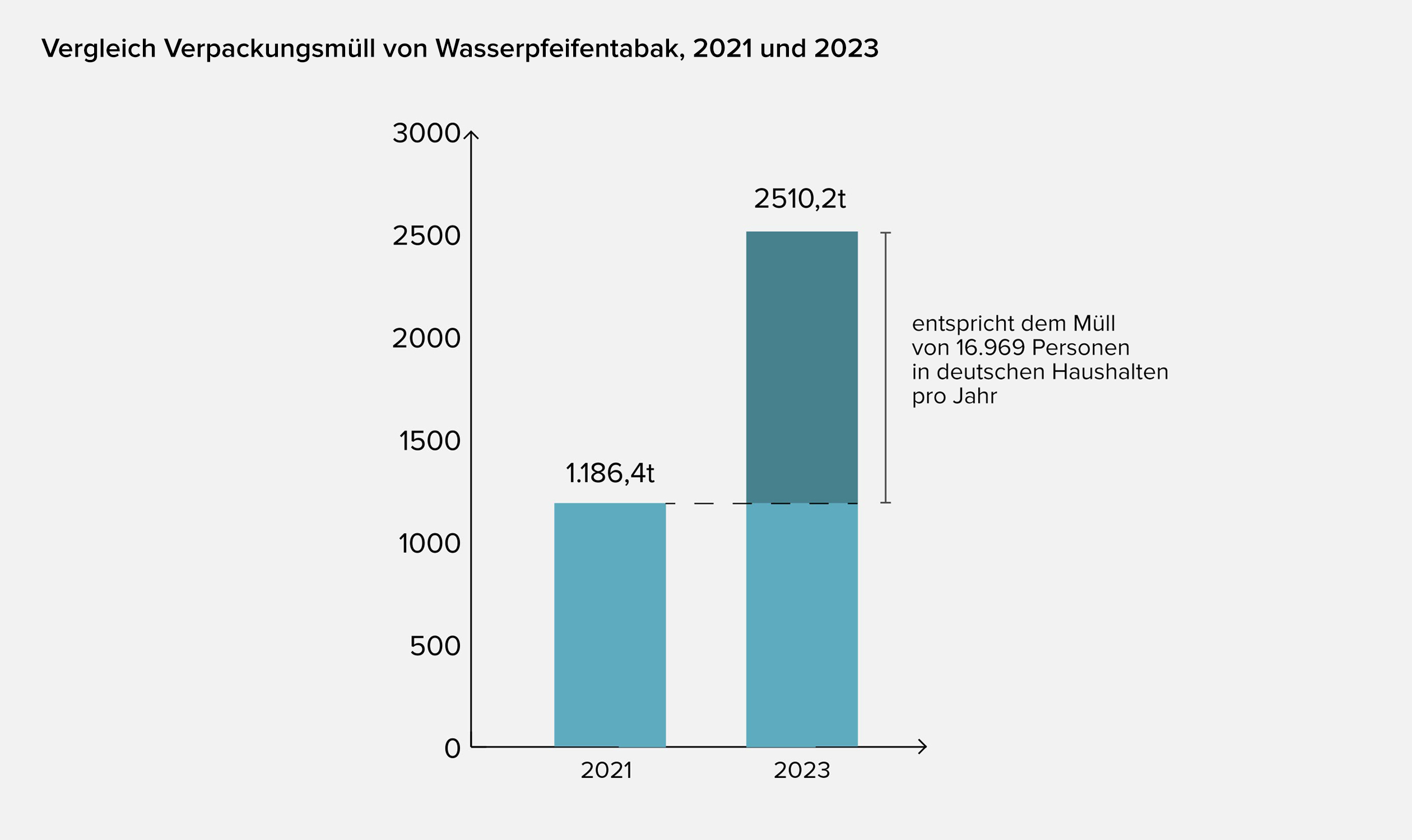
Pipe tobacco is the only type of tobacco that has recorded constant sales growth in recent years. This is shown by data from the Federal Statistical Office.(www.destatis.de). The following chart, which is an excerpt from the Fachserie 14 Series 9.1.1, shows the annual growth rates of this segment.

It is also clear from the Office's data that these growth rates are largely attributable to waterpipe tobacco, which is why this is now also listed separately in the statistics from 2022.
Until the end of 2021, tobacco manufacturers were still able to obtain tax stamps for pack sizes containing more than 25g of hookah tobacco and the production of these pack sizes was permitted until mid-2022. From July 2022, only the production of packaging with a maximum content of 25 grams will be permitted.
The main reason for this change in the law is that hookah bars are breaking the law by selling a ration of around 20 grams of tobacco taken from a 200g tin. According to the law, the tobacco must be sold with the entire contents of the packaging at the retail price. The retail selling price is the price printed on the tax stamp.
Accordingly, only packs containing 20g or 25g are permitted. However, these were not even offered by many hookah tobacco manufacturers, so that hookah bar operators resorted to 200g or 1000g packaging for this reason and also for cost reasons. In order to prevent this, the law has now come into force, according to which only packaging sizes with a maximum of 25g are permitted.
@mozeshisha Shisha tobacco 25g law - packaging waste?!
♬ Originalton - Moze Shisha
The change in the law means that every private consumer who wants to enjoy their hookah at home now has to buy 25g packaging. This is not only annoying when preparing the hookah, but also creates a large amount of packaging waste.
Most types of tobacco are packaged in a cardboard box, which is sealed with plastic on the outside. In this cardboard box, the tobacco is also sealed in a plastic bag so that it is packed airtight. There are also manufacturers who have switched from large tins for their 200g packaging to small plastic tins for the 25g packaging units.
Based on our own data, the current share of these two packaging variants is around 75% for cardboard boxes and 25% for plastic tins.
In order to assess the difference in packaging waste, we first need to make a few assumptions:
Based on the above assumptions, we assume that the hookah tobacco produced in 2021 will be divided into the following pack sizes:
With a new packaging size of 25 g, we arrive at a quantity of 204,912,000 cans for the same amount of tobacco. In order to calculate the impact on packaging waste, we took empty cans from different manufacturers and weighed them to determine an average value for each packaging size and thus calculate the total weight of the packaging material. Plastic cans in packaging containing 25 g have an average weight of 22 g. Packaging with a cardboard box and an inner plastic bag have a total weight of 9 g on average, with 6 g attributable to the cardboard box and around 3 g to the plastic content.
Accordingly, a packaging ratio of 75% cardboard boxes and 25% plastic cans results in the following quantities of packaging material:
Cardboard box packaging:
75% * 204.912.000 = 153.684.000 (Number of packages with cardboard box per year)
153.684.000 * 0,009kg = 1.383.156kg = 1.383,2t (cardboard + plastic packaging waste)
The waste is divided into plastic and cardboard as follows:
153.684.000 * 0,006kg = 922.104kg = 922,1t (Cardboard packaging waste)
153.684.000 * 0,003kg = 461.052kg = 461,1t (Plastic packaging waste)
Plastic can packaging:
25% * 204.912.000 = 51.228.000 (Number of packages with plastic cans per year)
51.228.000 * 0,022kg = 1.127.016kg = 1.127t (Packaging waste Plastic)
The total weight of all packaging materials is therefore 2510.2 tons.
With 200g cans, the calculation of packaging waste is not quite so simple, as some manufacturers use cans that are made of cardboard but have a "protective film". Other manufacturers, on the other hand, use pure plastic cans. The protective film is made of plastic on cans that are mainly made of cardboard. The two materials are very strongly bonded together, which makes it difficult to weigh them separately. For this reason, we have decided to calculate the total packaging waste and not to separate it.
The average weight of the packaging for a 200g can is 52.5g.
21,003,480 * 0.0525kg = 1,102,683kg = 1,102.7t (packaging waste plastic + cardboard)
For a 1000g can, the average weight of the packaging is 148.5g. This results in the following packaging weight for the 563,508 cans determined above:
563,508 * 0.1485kg = 83.7t (packaging waste plastic + cardboard)
This results in a total weight of 1,186.4 tons for the old packaging.
If we now look at the two total quantities of packaging waste generated, the 200g and 1000g tins weigh 1,186.4 tons compared to 2510.2 tons for the 25g tins. The packaging waste generated by hookah tobacco has therefore more than doubled as a result of the change in the law.

We find it shocking that in this day and age a law is being changed in such a way that the amount of packaging waste is increasing to such an extent!
The additional waste produced corresponds to the same amount generated by 16,969 people in German households per year! (Source:DESTATIS)